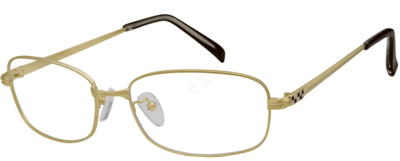Ben Franklin’s Glasses
![ben-franklin[2] Benjamin Franklin wearing glasses, 18th-century attire; serious expression. No background objects specified.](https://www.zennioptical.com/blog/wp-content/uploads/2012/05/ben-franklin2.png) I’m probably showing my age here, but I can remember a time when “milestone” birthday parties (for 30, 40 or 50 year olds) weren’t complete without a series of gag gifts, each present representing the guest of honor’s descent into old age.
I’m probably showing my age here, but I can remember a time when “milestone” birthday parties (for 30, 40 or 50 year olds) weren’t complete without a series of gag gifts, each present representing the guest of honor’s descent into old age.
The gifts didn’t vary that much: A walking cane, adult diapers and bottles of Geritol were standards, as was an old, discarded pair of bifocal glasses.
You could tell that they were bifocals by the horizontal line drawn across the center of each lens. A wearer’s face could be completely free of wrinkles, but the lines on their eyeglasses were a dead give-away of their age. Only “old” people are supposed to wear bifocals.
(Well, not really, but we’ll get to that in a minute.)
Nowadays, of course, bifocals have improved and many versions look pretty much like regular glasses, making them poor party gifts.
What are Bifocals?
Bifocal lenses incorporate two different viewing strengths: In many cases, the lower half of the lens is powered for close-up viewing, while the upper part of the lens helps you see things at a greater distance. For individuals with more complex vision issues, doctors may prescribe trifocals, which provide three levels of vision correction.
Only for the AARP Crowd?
Of course, you may now be wondering what the big deal is about bifocals: After all, people use eyeglasses to correct vision problems all the time, so what makes bifocals more suited for seniors?
While it is true that there are several conditions that bifocals can address, such as astigmatism or shortsightedness, they are most often prescribed to adults suffering from presbyopia.
Presbyopia is an age-related eye condition affecting the ability its sufferers to clearly view objects at varying distances. When we are younger, the lens has an easier time adjusting to see things both close and near to us. As we age, however, the lens becomes less flexible, hampering our vision.
(If only we could do eye yoga!)
In some cases, presbyopia begins in a person’s mid-thirties, though many people won’t experience trouble with their vision until they are well into their 40s. The condition doesn’t always require treatment right away and some people may be able to get along with wearing non-prescription “reading glasses” for a time.
(Still, if you begin to notice any changes in your vision, see an eye doctor right away.)
Ben Franklin’s Invention?
Before Al Gore and his Internet, there was Ben Franklin and his bifocals. While some have questioned whether Franklin actually invented bifocals, his correspondence with friends regarding his “double spectacles” suggests that the legend is true. The term “bifocals,” incidentally, was first used by the inventor of trifocal lenses, John Isaac Hawkins.
Modern Bifocals
Fortunately, modern bifocals and trifocals aren’t nearly as conspicuous as older models. “Seamless” or “invisible” bifocals don’t have a line of demarcation between different areas of the lens. This is awesome if you want to keep your age a secret, though some people have difficulty adjusting to this sort of lens, as the area where the optical power shifts can be blurry, causing vision difficulties for some people.

Computer users should be particularly careful with selecting eyeglasses: Some bifocal wearers have real problems with staring at computer screens for long periods of time, so it’s a good idea to ask your doctor about switching to a different type of glasses when using a computer.
Zenni Bifocals
Many Zenni frames can accommodate bifocal and progressive lenses: In the online store, click on the frames that interest you and check the product description for more information.


 Canada
Canada